OnePlus 7 Pro Review
OnePlus 7 Pro Review
How does the OnePlus 7 Pro 5G fare?
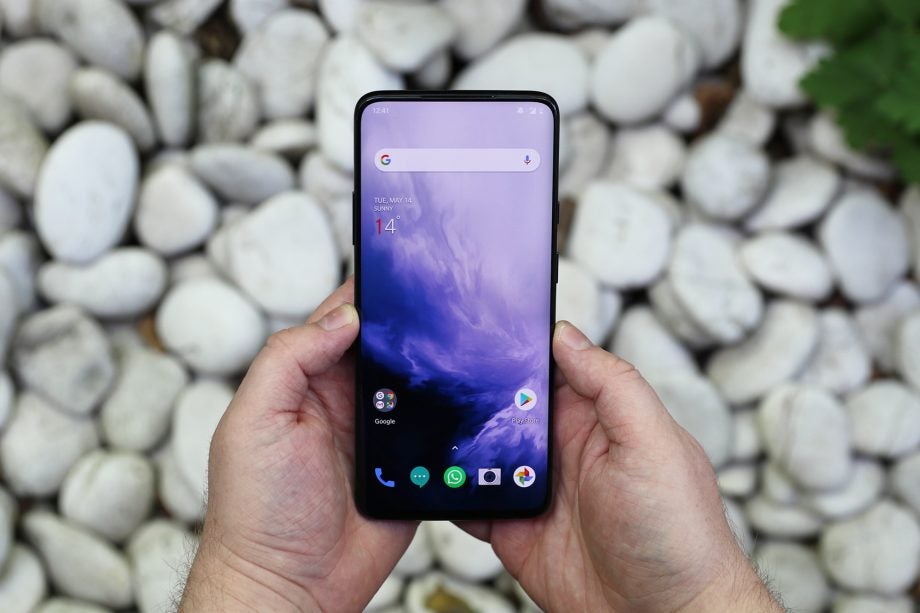
Sections
- Page 1 OnePlus 7 Pro Review
- Page 2 Camera Review
- Page 3 Battery Life Review
- Page 4 Screen Review
- Page 5 Performance Review
- Page 6 OnePlus 7 Pro 5G Review
Verdict
The OnePlus 7 Pro manages to innovate in one of the most competitive technology markets out there while still circumventing convention by undercutting the majority of the competition on cost. Even if wireless charging and water resistance aren't part of the equation, It has one of the nicest displays you'll find on a phone, is a superb performer, offers great battery life and the camera is always improving.
Pros
- Oxygen OS user experience
- Stunning 90Hz HDR display
- Top-notch performance
- Great battery life
Cons
- Underwhelming cameras
- No wireless charging
- No water resistance
- Large and unwieldy
Key Specifications
- Review Price: £649
- Qualcomm Snapdragon 855
- 128GB/256GB internal storage
- 6GB/8GB/12GB RAM
- 6.67-inch QHD+ 90Hz Fluid AMOLED
- 48MP main camera w/ OIS
- 16MP ultra-wide 117-degree sensor
- 8MP tele w/ OIS + 3x optical zoom
- 16MP pop-up front camera
- 30W Warp Charge fast-charging
- 4000mAh battery
The OnePlus 7 Pro has the best display currently available on a phone, the latest internals and a design that takes a lot of inspiration from the Samsung Galaxy S10. It’s also the priciest OnePlus phone yet, moving away from the company’s idea of offering high-end specs for a bargain price.
Despite starting life as a plucky underdog, however, OnePlus has had to grow up fast and nothing highlights the momentum the company has amassed like its debut entrants into the phone market for 2019: the OnePlus 7 and OnePlus 7 Pro.
Read our reviews of the OnePlus 8 and OnePlus 8 Pro
The OnePlus 7 Pro is for those who want the best the company has to offer and a phone that packs in enough to compete with the latest rival flagships; devices like the Samsung Galaxy S10 Plus and Huawei P30 Pro.
OnePlus 7 Pro design brings a new level of attention to detail
The OnePlus 7 Pro looks and feels unlike anything the company has produced thus far. While the standard OnePlus 7 bears more than a passing resemblance to last year’s OnePlus 6T, the Pro model is a wholly different beast.
The lessons that Oppo learnt creating its Find X 2018 flagship may well have played a part in the engineering used by OnePlus’ new star player (as OnePlus uses Oppo’s production facilities to build its phones), based on not just its looks but the way it feels too.
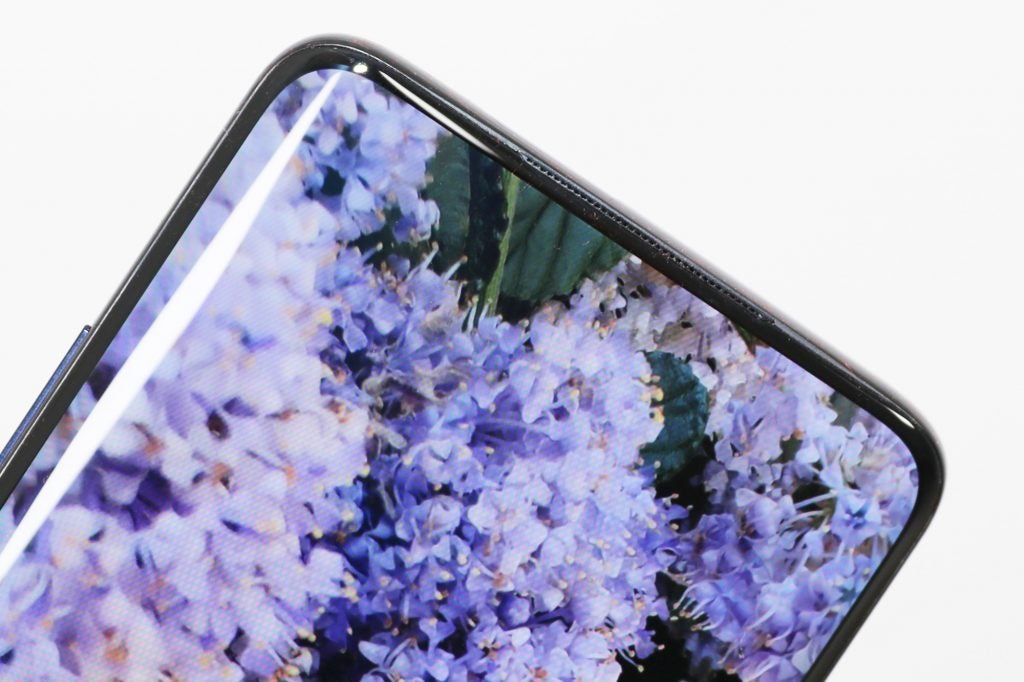
Almost bezel-free
An expansive and near bezel-free curved display stretches across the phone’s front, granting it an impressive 88.6 percent screen-to-body ratio; one of the highest of any current smartphone. Essentially, when looking at the front of the 7 Pro, all you’ll see is screen, especially thanks to the display’s curved edges.
With a curved Gorilla Glass front mirrored by the phone’s curved glass back, the metal frame that sits within this sandwich is decidedly thin, but in spite of this, the phone still feels sturdy and well-built.
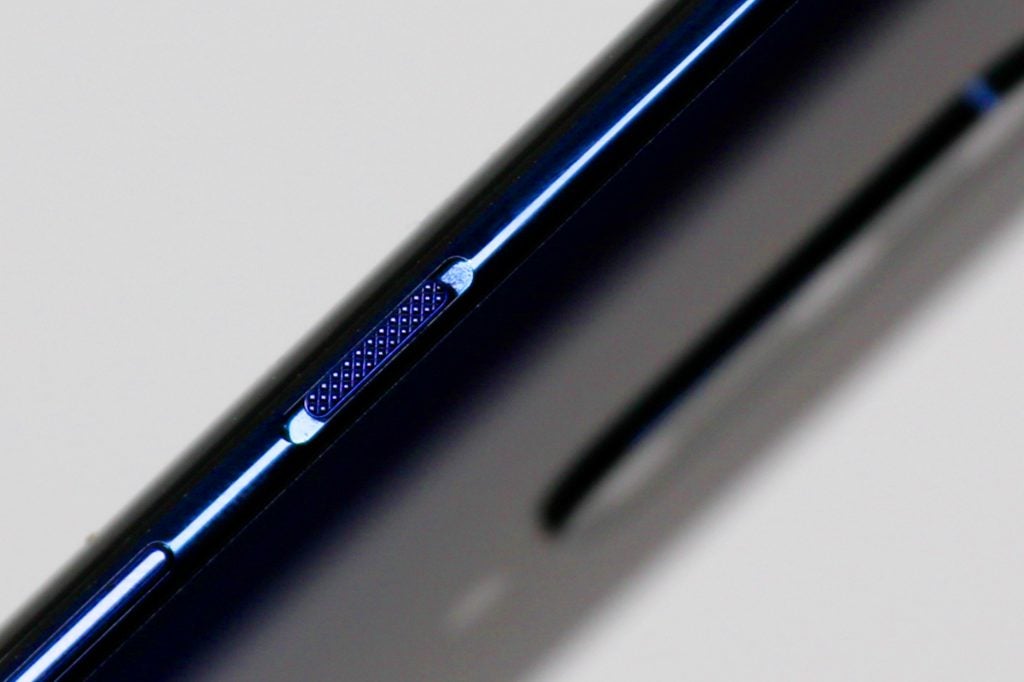
There’s still room for OnePlus’ signature physical alert slider along its right side – a defining feature on the company’s phones that lets you quickly switch between ringing, vibrating and silent sound profiles without having to look; it’s a small but important bonus that you’d miss, were it taken away.
With no notch or hole-punch camera to speak of, OnePlus has instead opted for a motorised pop-up front-facing snapper, akin to the one found on the Vivo Nex (although this one looks and feels a lot more robust).
It’s quick enough for face unlocking and, as with every phone that’s integrated such a system, comes with claims of rigorous testing and reliability.
Related: Best Android phone
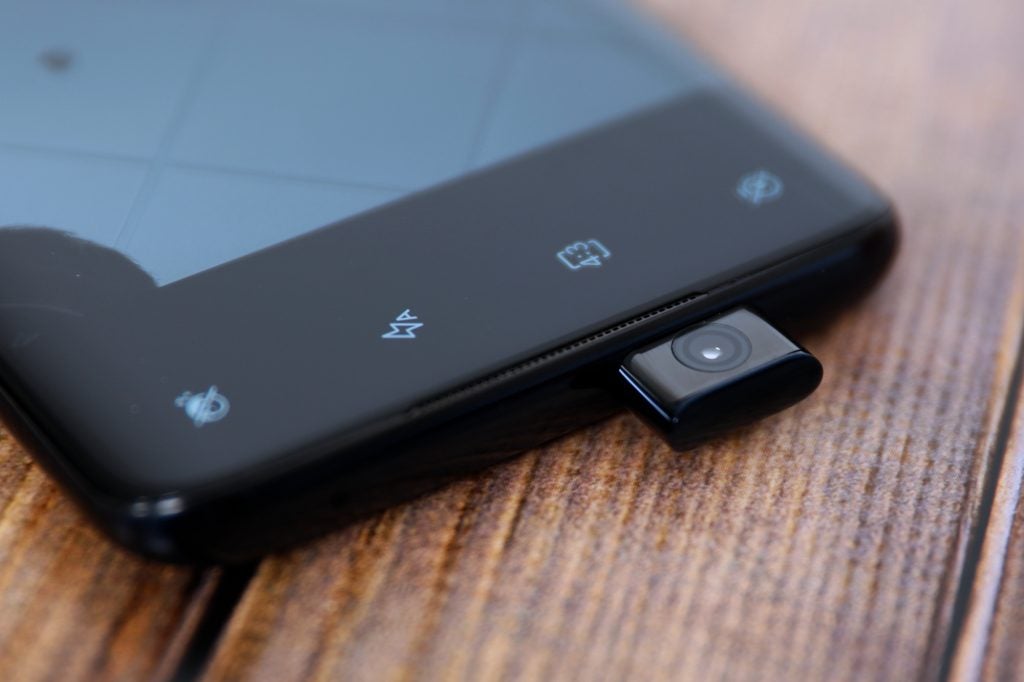
OnePlus states that the phone’s front camera mechanism has withstood some 300,000 actuations during testing, without any sign of lag, slowdown or breakage. There’s fall detection in there too, which will pull the camera back inside the moment the phone detects itself hurtling towards the ground.
Collectively, you should feel comforted by these assurances, but as ever, in the real world, I still have my doubts about the longevity of any moving parts on a phone, especially one a delicate and intricate as a motorised camera unit.
For all the care and attention OnePlus has poured into the aesthetics of the 7 Pro, such beauty does come at a practical sacrifice that some might not be willing to overlook.
For a start, with a 6.67-inch, 19.5:9 display; this is a very big device – OnePlus’ largest ever. It’s almost identical in width to its predecessor but notably taller, plus those narrow metal sides give you less purchase, making one-handed use precarious.
Add to that a complete lack of any one-handed mode within the software and elements at the top of the screen within apps (such as the placement of Instagram’s story ‘bubbles’) require two hands or a risky shimmy up and down the phone’s body to be pulled in reach of a thumb.
There’s also the matter of the finish of the phone. I appreciate OnePlus’ decision to shy away from a boring all-black body, instead offering up three colours at launch (partially tied to different RAM and storage configurations).
For the base 6GB RAM/128GB internal storage SKU your only option is ‘Mirror Gray’ – an understated colourway for those uninterested in flash and flare, or ideal if you’re looking to slap a case on it immediately. This is the closest thing to black on offer from this generation of OnePlus.
Fork out for the 8GB/256GB model and you have the full gamut of colours available to you. Mirror Gray is accompanied by ‘Almond’ – a mix of polished gold metal and an iridescent cream tone set behind glass, similar in styling to a gold iPhone XS. Nebula Blue is arguably the biggest head-turner and the finish that my review unit (pictured) came in.
While all three looks deserve praise for their ‘understated cool’, if you’re planning on going caseless, ergonomics once again come into play. The gloss finish of the Mirror Gray and Almond models backs attract fingerprints as readily as any of their competitors, while the finely-textured glass given to the Nebula Blue model will remain comparatively smudge-free.
The trade-off is that the blue model’s treated rear also lacks grip which, paired with it’s already unwieldy form, pushes the chance of the phone slipping from your fingers way up. While I haven’t asked OnePlus directly, I have no doubt that the 7 Pro’s fancy new screen isn’t cheap to replace. You have been warned.
Related: OnePlus 7 Review
The OnePlus 7 display is the first truly competitive mobile HDR screen
On a more positive note, that display is nothing short of exceptional. Out the box, it may not be as accurately tuned as some of its rivals’ screens but there are plenty of tools to customise the viewing experience should you wish to tinker around.
The company also lauded the screen’s A+ rating from independent body DisplayMate, before the 7 Pro had even officially launched, just in case there was any doubt about its capabilities.
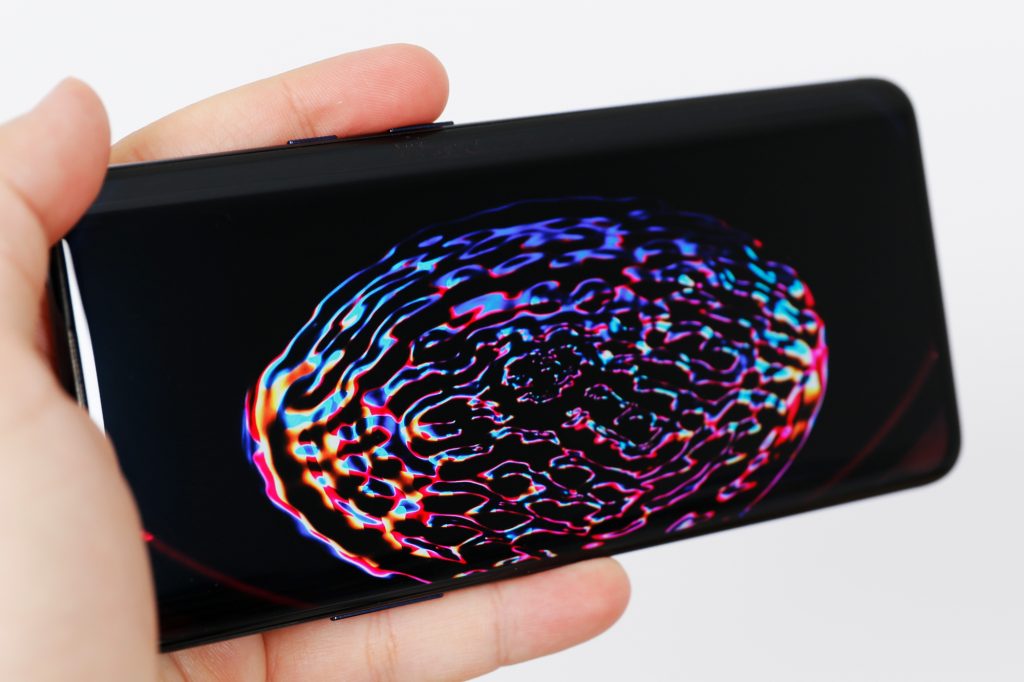
HDR visuals on 6.67-inch display are stunning
It’s the first time we’ve seen a OnePlus screen transcend above Full HD+ resolution. This Quad HD+ panel is also HDR10 complaint, with approved support for services like Netflix – a popular service that previously only offered limited support for OnePlus devices.
Related: What is HDR?
The ‘Fluid AMOLED’ panel, as OnePlus calls it, gets its name not just from the inky blacks and vivid colours it can push out, but the intriguing 90Hz refresh rate that it supports.
Although you can manually dial it down to 60Hz, as most phones use (or have it jump down when battery saver mode is activated), the 7 Pro’s screen remains fixed at 90Hz. The result is an effortlessly smooth-looking user experience that lends itself perfectly to the idea that this is a cutting-edge handset.
Seeing really is believing, especially as only a handful of other devices offer anything close to what OnePlus has cooked up here.
Apple’s ProMotion technology, along with the Asus ROG Phone‘s OLED and the Razer Phone series’ IGZO displays all have the ability to operate at refresh rates notably higher than 60Hz, but in the smartphone space, the OnePlus 7 Pro might be the most approachable and mainstream handset to showcase such technology.
There are known concerns around the impact on battery life leaving the smooth 90Hz setting on all the time might have, but based on the longevity I experienced without ever switching it off (or rather, down to 60Hz), I’d just enjoy its inclusion and how it elevates acts as simple as swiping around the interface.
The worst thing about the feature? You really notice its absence when using any phone that doesn’t support it.
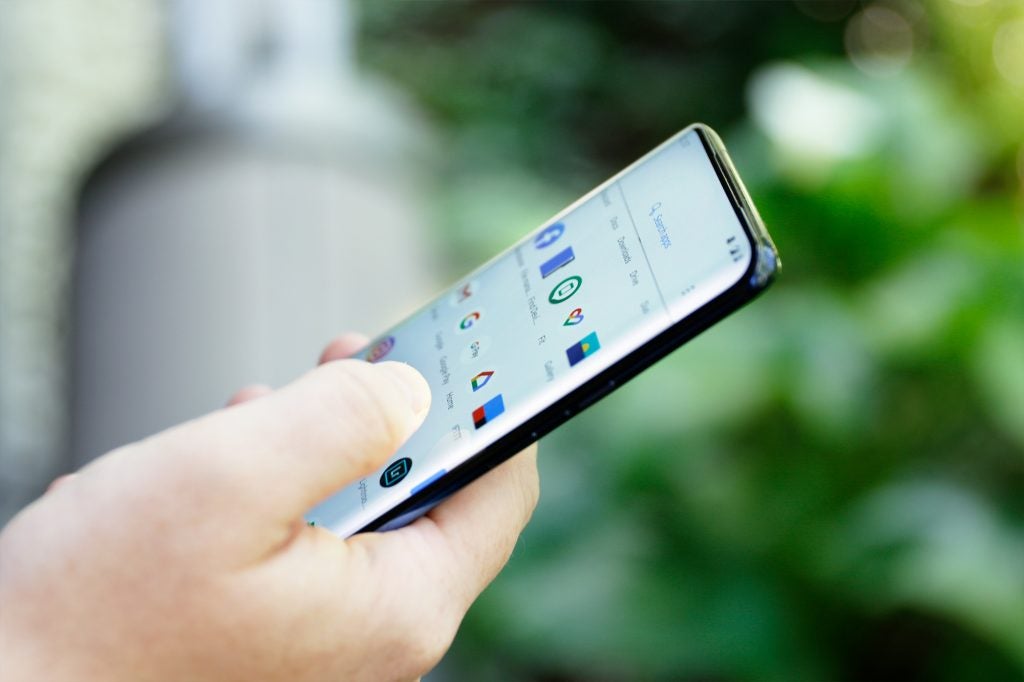
The display smarts don’t stop there. There’s also the integrated optical in-display fingerprint sensor – an evolution on the feature that OnePlus introduced with last year’s 6T.
This time around, OnePlus has enlarged the sensor’s read area and reduced latency; all I can say is that it feels much faster and more reliable than its predecessor, even if it can still be tripped up by particularly cold or wet hands.

With next-to-no bezel, there’s no notification LED to speak of, so instead light pulses down the curved edges of the display in the corresponding app colour to great effect – a feature that both Samsung and Oppo have used on curved-display laden devices.
OnePlus 7 Pro camera has greater versatility, but is that enough?
OnePlus has kept up with principle imaging trends in the realm of smartphone photography, and the OnePlus 7 Pro makes the same move that many of its contemporaries already have; implementing a triple-sensor on the back.
The 7 Pro’s three-lens arrangement is comprised of a 48-megapixel main snapper with OIS (optical image stabilisation), an 8-megapixel telephoto sensor, again with OIS, that grants the phone 3x lossless optical zoom, while a 16-megapixel ultra-wide angle sensor, with an impressive 117-degree field of view, rounds things out.
Related: Best camera phones
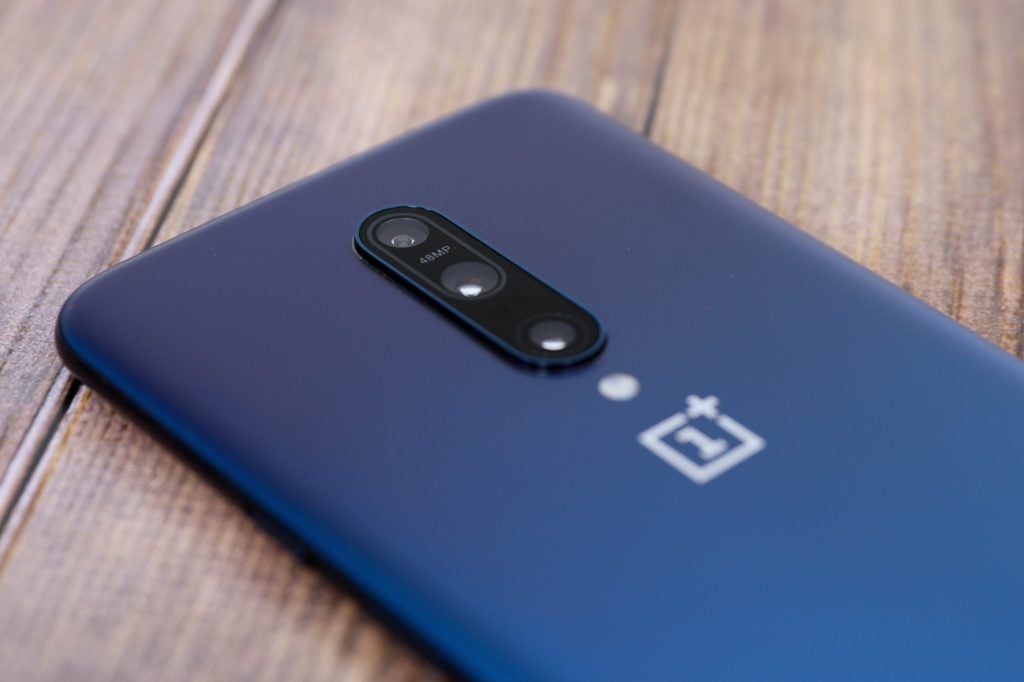
OnePlus has worked hard to ensure the hardware is put to good use, with the phone boasting enhanced versions of the company’s Nightscape (version 2.0) scene mode and pixel-binning technology (condensing the image data of four pixels into one to reduce shake and noise) as a result of that huge 48-megapixel main sensor.

The ultra-wide angle sensor lets you fit more in-frame, only adding to the 7 Pro’s photographic versatility.
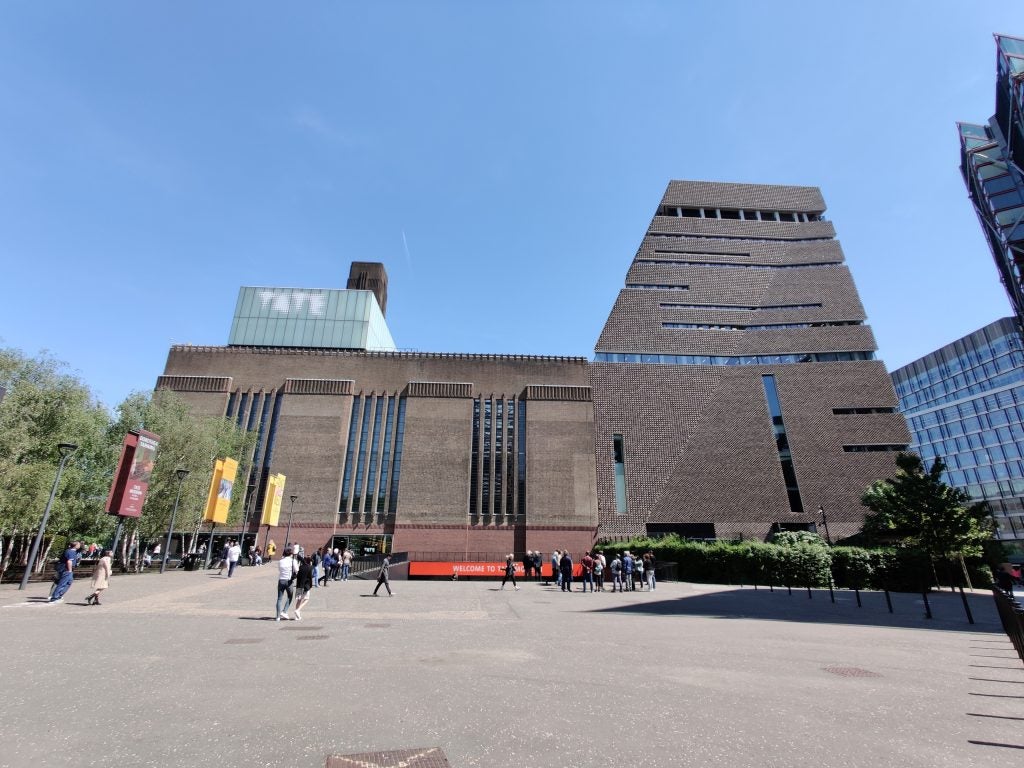
The quality of the telephoto snapper also left me impressed, with pleasing detail retention. Its narrower aperture means images do, however, suffer in low-light shooting
As for low-light photography, I was surprised by the results produced by the phone, but not in a good way. OnePlus worked hard to improve the low light capabilities of last year’s OnePlus 6 and 6T, but this new hardware is clearly trickier to tune. As before, we’ll likely see subsequent software updates that rectify the phone’s current low light capabilities which I’m hoping will improve with time.

The newly-updated Nightscape mode certainly helps alleviate general low-light shooting but over-corrects, with hard-hitting sharpening and mismanaged colour correction that give shots an unnatural finish.

For a true deep-dive into this phone’s imaging capabilities, jump over to our full OnePlus 7 Pro camera review.
The OnePlus 7 Pro performance is stunning
The OnePlus X notwithstanding OnePlus isn’t in the business on skimping on performance. When you buy a OnePlus phone, you know you’re getting a top-notch processor and complementary smarts to match. Never has that been truer than with the OnePlus 7 Pro.
I already mentioned the memory and storage options that the 7 Pro is available in, which range from generous to pure excess (with up to an additional £150 in tow) but speed and power are everywhere within the phone’s internals.
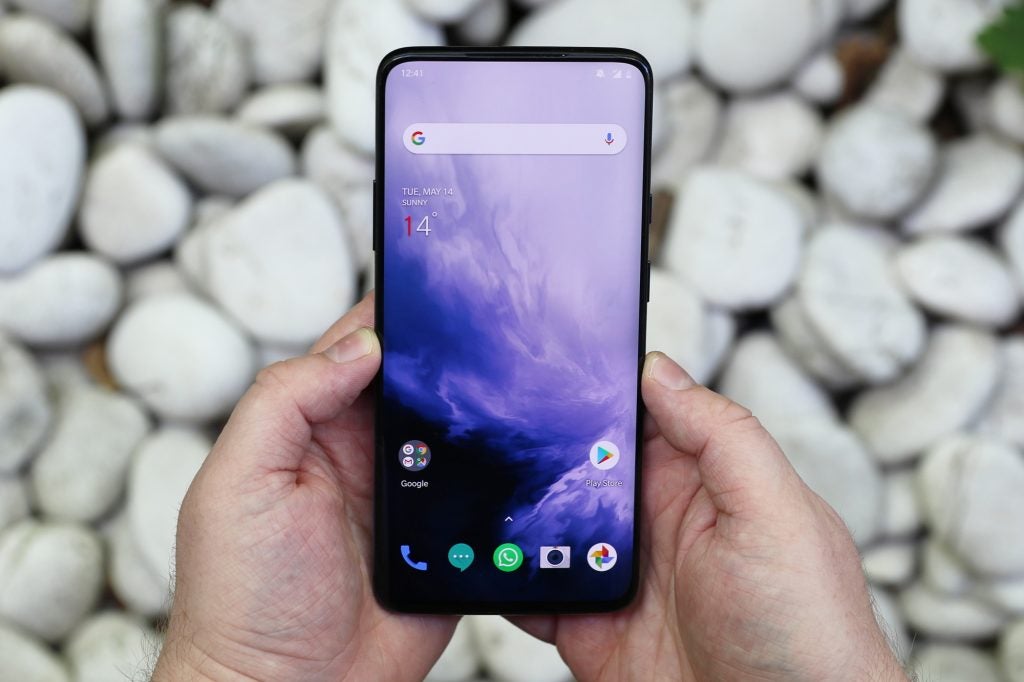
The latest and greatest 7nm Qualcomm Snapdragon 855 chipset takes charge, which is also how OnePlus is able to convert the 7 Pro into the OnePlus 7 Pro 5G – the 5G-capable brother to the standard model that also integrates Qualcomm’s complementary X50 5G modem.
Then there’s the inclusion of Universal Flash Storage 3.0. OnePlus has managed to beat Samsung to the punch after the Korean tech giant had to pull its first foldable, the Galaxy Fold, before launch as a result of engineering and reliability issues.
Related: Samsung Galaxy Fold – The final chapter
With the Fold out of the way, it looks as though the OnePlus 7 Pro will be the first phone on the market to support UFS 3.0, with Samsung following with the rumoured Galaxy Note 10 later into 2019.
The technology is theoretically up to twice as fast when it comes to read and write speeds, which affects everything from app load times to file transfers.
There’s so much powerful hardware here that I can’t find fault with the 7 Pro’s performance, and this new addition only serves to help the 7 Pro take the lead in an area that its pricier competitors still haven’t ventured.
OnePlus 7 Pro battery life goes beyond expectation
The story of speed on the OnePlus 7 Pro doesn’t stop with the phone’s fluid user experience and raw performance; it sports suitably solid fast charging technology too.
We first encountered the company’s Warp Charge feature on last year’s OnePlus 6T McLaren Edition and it’s now become part of the mainstream offering here.
The 30W Warp Charge adapter and complimentary cable are unquestionably sizeable (although the previous generation Dash/Fast Charger wasn’t really any more compact) but the convenience they bring nullifies the hassle of carrying them around.
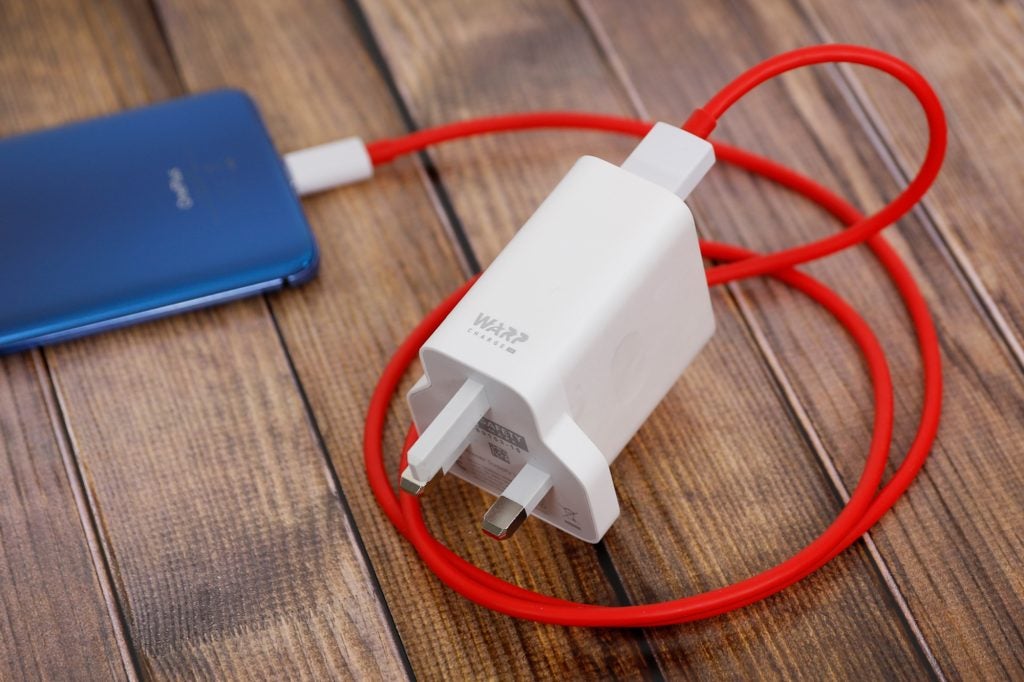
The 7 Pro’s large footprint means it’s also able to carry a hefty 4000mAh battery within its belly and, with the included Warp Charger, that sizeable cell can be refilled from flat to full in under an hour and twenty. What really impresses is the initial charge rate, however.
A third of the battery can be filled in just 15 minutes and more than a day’s worth of juice can be replenished within 30. Most of the battery can be charged within an hour too, so you never have to wait long to give the 7 Pro a meaningful top up.
While quick in their own right, OnePlus’ fast-charging capabilities are no longer industry-leading; Huawei has instead taken that crown. The OnePlus 7 Pro does also lag slightly behind due to its lack of any form of wireless charging – an absentee feature that the company has explained may never be part of the equation on its devices.
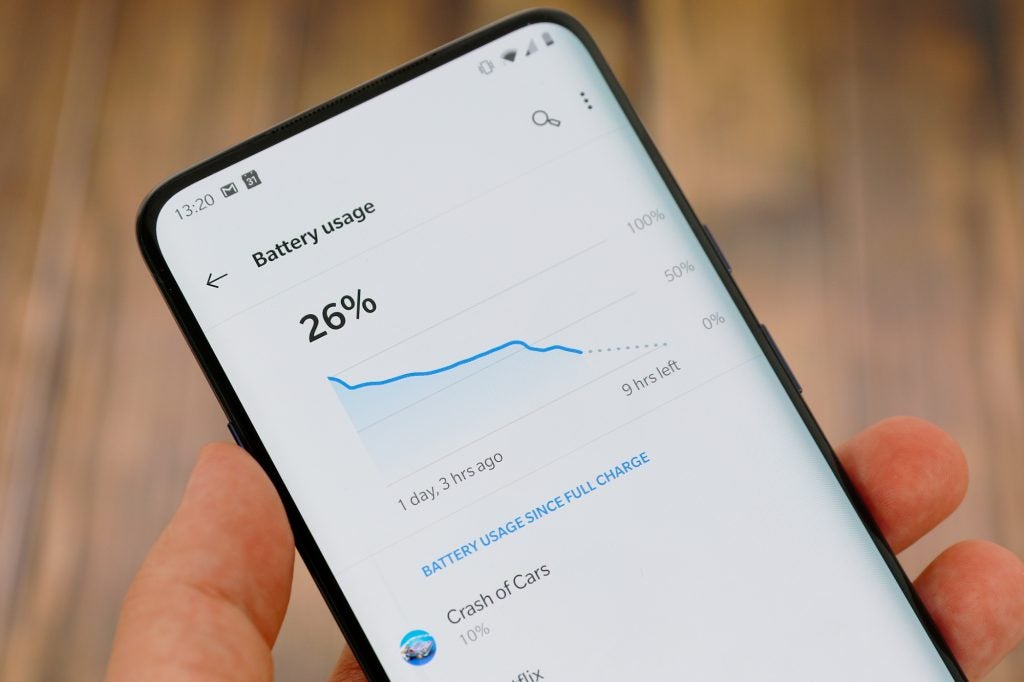
As for longevity, the OnePlus 7 Pro, left me thoroughly impressed. While charging the OnePlus 7 Pro is a lot less painless an experience compared to some phones (I’m looking at you Apple), not having to charge it all was an even bigger win.
I was consistently reaching two days of use and up to 5 hours of screen-on time on a single charge, which is well above most modern phones’ more approachable promised day-long endurance.
If I had flipped the refresh rate down to 60Hz or relied on battery saver mode at all, there’s every chance the phone would have lasted even longer.
Little has changed with OnePlus 7 Pro software, and that’s no bad thing
Android 9.0 underpins the software experience on this generation of OnePlus phones but the company’s OxygenOS overlay (version 9.5.2 as tested) is what you’re actually navigating around. It’s a great tweaked take on base Android that’s slick and clean, easy-to-use and powerful.
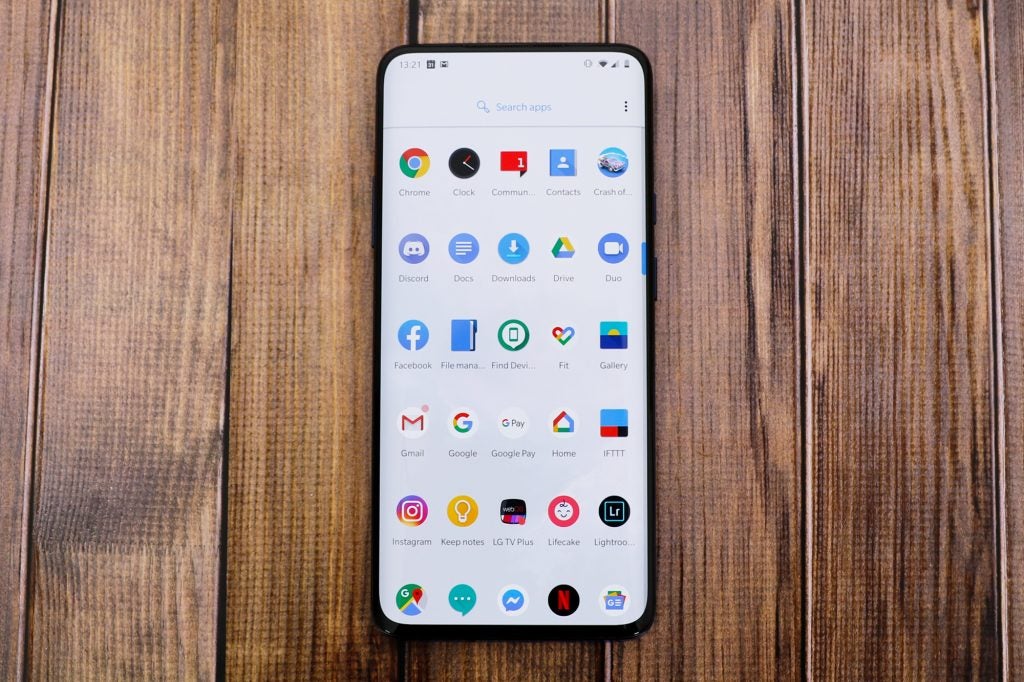
Integrated gestures make it easier to summon the notifications and quick settings (particularly useful with the 7 Pro’s tall display), as well as activating features like the camera and the flashlight without ever having to wake the phone up.
‘The Shelf’ is a dedicated space for iOS-like widget placement which keeps things tidy, and there’s a hidden ‘second space’ where you can place apps that you want to hide from prying eyes should you hand your phone to a friend. These are all pre-existing features, however.
Notable new additions for the 7 Pro include an enhanced gaming mode that silences notifications and locks screen brightness down, or by enabling ‘fnatic mode’ the phone directs all CPU, GPU and memory usage to your current gaming session and nowhere else.
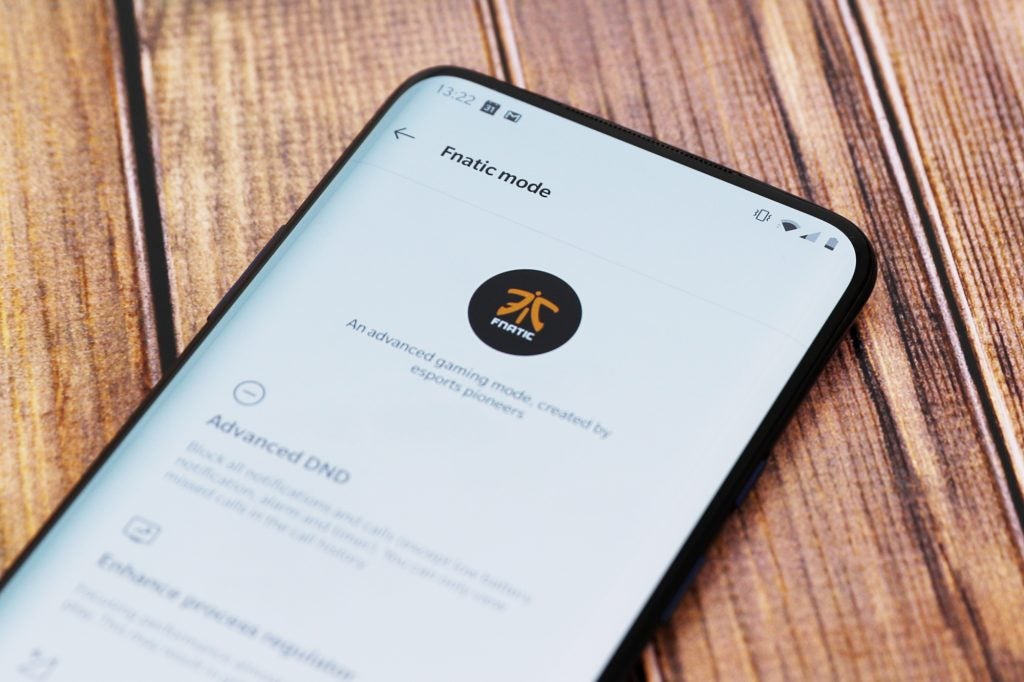
The new Zen mode was born from the mindfulness practices of OnePlus’ senior staffers and takes a hard stance on pervasive phone checking by locking down everything, save for emergency calls, incoming calls and camera access, for 20 minutes at a time.
Not even restarting or powering the phone off and back on can you escape out of this experience, so make sure that you’re ready for the break, before committing.
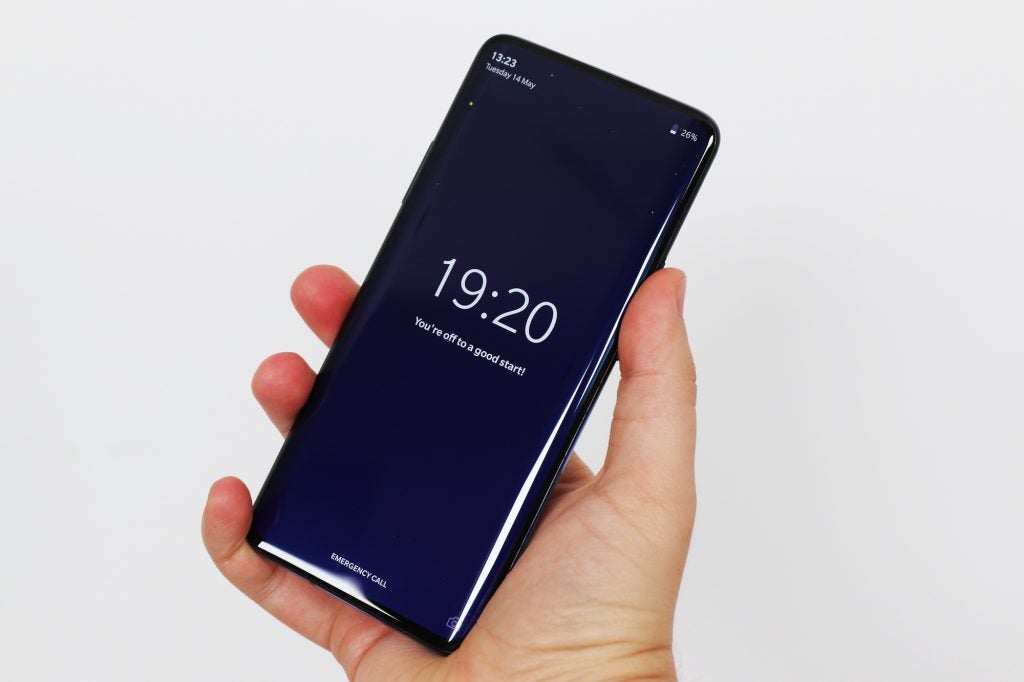
The feature feels like OnePlus’ extension of Android Pie’s native digital wellbeing toolset and as with much of what makes the 7 Pro decidedly OnePlus, it’s an odd inclusion but one that I appreciate nonetheless.
Should I buy the OnePlus 7 Pro?
When I first took delivery of the OnePlus 7 Pro, I wasn’t told how much it would cost (that information came later), and I was a little worried.
This phone is undoubtedly feature-packed, the richest the company has ever made, but its higher price warrants greater scrutiny. Previous OnePlus phones have always been pit against the flagships of the time but the comparative affordability they’ve offered has absolved them of any minor shortcomings that would otherwise have been met with disappointment or beratement.
Even so, the OnePlus 7 Pro still undercuts the majority of the 2019 flagship pack (by several hundred pounds in some cases), meaning I can forgive the absence of features like (certified) water resistance and wireless charging – this phone will still leave you impressed (and with more money in your pocket).
Related: Is the OnePlus 7 series water resistant?
Where Huawei’s P30 Pro takes the cake for smartphone camera and battery ability, the OnePlus 7 Pro’s screen is easily one of the nicest I’ve clapped eyes on, plus OnePlus’ user experience is among the best skinned Android experiences you’ll find out there.
The OnePlus 7 Pro shows that the company is able to grow, bring about meaningful changes and greater competition without losing what makes the brand and its devices so uniquely appealing.
How we test phones
We test every mobile phone we review thoroughly. We use industry standard tests to compare features properly and we use the phone as our main device over the review period. We’ll always tell you what we find and we never, ever, accept money to review a product.


